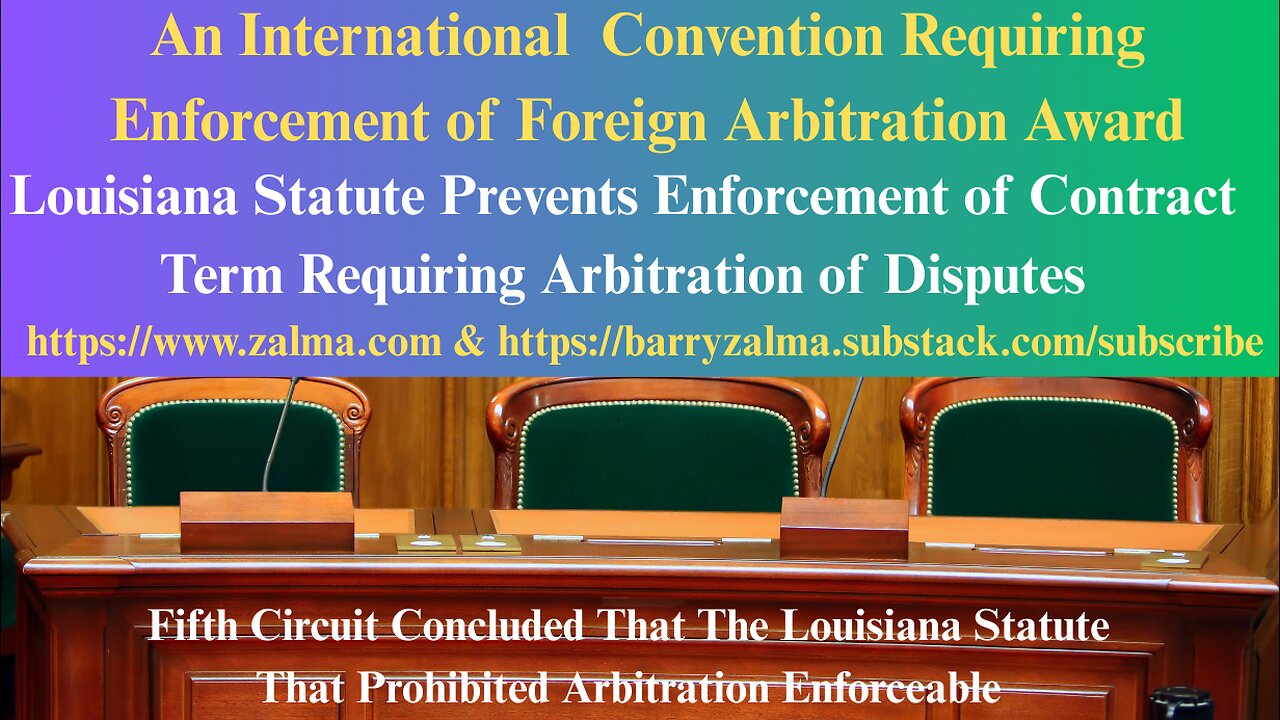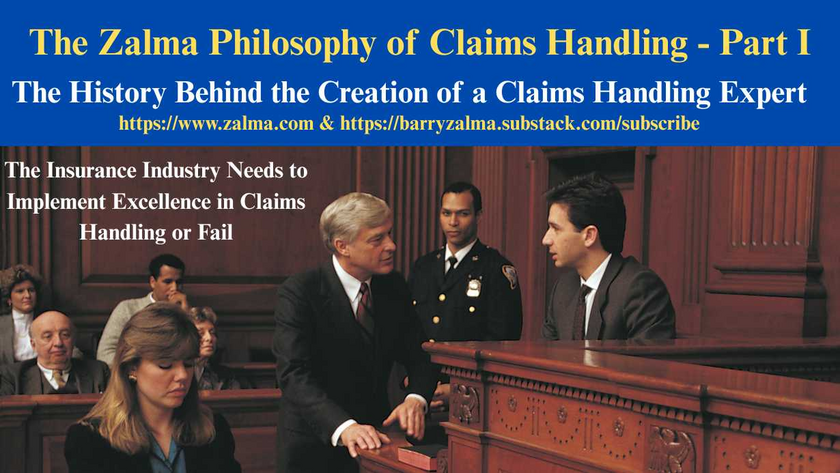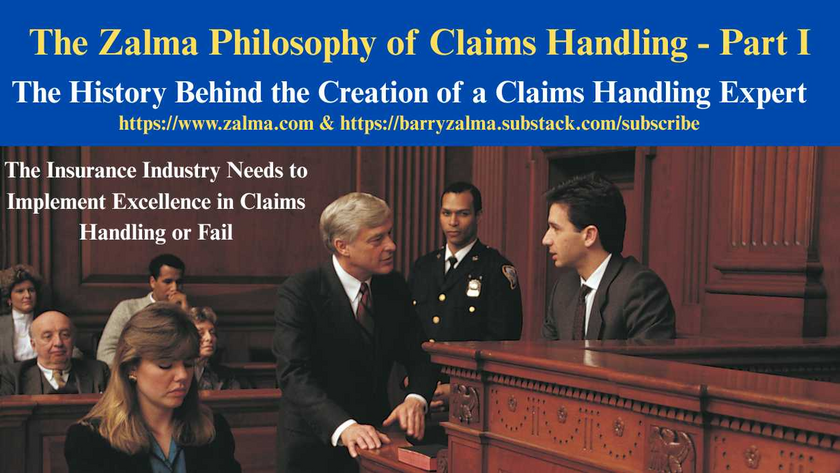
Trucker Driving to his Home Where Truck is Garaged is Still Working for Employer
Read the full article at https://www.linkedin.com/pulse/whos-first-employers-insurer-while-driving-home-zalma-esq-cfe and at https://zalma.com/blog plus more than 4100 posts.
Posted on March 2, 2022 by Barry Zalma
INSURERS SHOULD AVOID LITIGATING OVER WHO INSURES WHAT
It should be axiomatic that insurers who both insure the same person should resolve coverage disputes rather than litigate. When two insurers disputed which was required to defend and indemnify an insured they brought about a necessary appeal when they could have, and should have, resolved the dispute directly or with the assistance of Alternative Dispute Resolution
like mediation.
Acuity, A Mutual Insurance Company (“Acuity”) preferred to litigate and, after losing, appealed the decision of the Butler County Court of Common Pleas granting summary judgment to Great American Assurance Company (“GAAC”). In Great American Assurance Company v. Acuity, A Mutual Insurance Company, et al., 2022-Ohio-501, No. CA2021-08-097, Court of Appeals of Ohio, Twelfth District, Butler (February 22, 2022) the Court of Appeals resolved the dispute between insurers.
FACTS
This case arose from a vehicular accident between a 2000 Volvo tractor owned by Herb Winsted (“the Truck”) and another motor vehicle. At the time of the accident, Winsted was an independent contractor for Wm. Hafer Drayage Co. (“Hafer”), which is an intermodal trucking company that hauls containers via company drivers and independent contractors.
Pursuant to his independent contractor agreement with Hafer, Winsted provided transportation related services to Hafer and used the Truck to move containers to and from different warehouses. Winsted began exclusively hauling loads for Hafer in 2019, and at the time of the accident, the Truck displayed Hafer’s name and “DOT” number on its door.
Winsted’s Insurance Coverage
Pursuant to Winsted’s independent contractor agreement with Hafer, the Truck was covered by Hafer’s “public liability [and] property damage * insurance coverage[.]” At the time of the accident, Hafer was insured with Acuity via a Commercial Auto and Commercial Excess Liability Policy (“the Acuity Policy”). Pursuant to the Acuity Policy, Acuity agreed to injuries caused by an accident and resulting from the ownership, maintenance or use of a covered auto. The parties do not dispute that the Acuity Policy includes the Truck in its schedule of covered autos.
Winsted also obtained a Non-Trucking Liability and Physical Damage Policy from GAAC for the Truck while it was not being operated on behalf of Hafer (“the GAAC Policy”). Obtaining such a policy was a requirement of Winsted’s independent contractor agreement with Hafer. Pursuant to the GAAC Policy, GAAC agreed to provide liability coverage for the Truck as described by Part (II)(A) of the policy.
Winsted’s Business for Hafer and the Day of the Accident
While working with Hafer, Winsted received his job assignments from Hafer’s dispatcher. After completing his final assignment of the day, Winsted would either proceed to the Hafer shipping yard (“the shipping yard”), or go directly to his home. Winsted typically began and ended his workday with the Truck at his home.
On October 4, 2019, the date of the accident, Winsted informed dispatch that he had completed a delivery, but still had a chassis. At that point, dispatch instructed Winsted to return to the shipping yard to return the chassis. The location of Winsted’s final delivery was approximately two or three miles from the Hafer shipping yard. Upon arriving at the shipping yard, Winsted returned the chassis and submitted his weekly paperwork to the dispatcher. On his way home, Winsted stopped at Ollie’s Bargain Outlet (“Ollie’s”), where his wife was working at the time, and purchased blue jeans. After leaving Ollie’s, Winsted continued his customary route home, stopping for fuel at a Marathon gas station on the way. The accident occurred after Winsted left the Marathon gas station, around 5:00 p.m., and on Winsted’s typical route home from the shipping yard.
After purchasing fuel, Winsted continued on Hamilton Cleves Road, as he would have on a typical drive home. Approximately five to seven minutes from Winsted’s home, at the intersection of Cincinnati Brookville Road and Brown Farm Drive, Winsted collided with another vehicle, allegedly causing harm to the vehicle’s minor passengers. Thus, despite the brief departures and returns to his normal route, Winsted’s drive home from the shipping yard was the same route he would have typically taken at the end of a workday.
The Declaratory Action and Summary Judgment Decision
After the accident, GAAC filed a complaint for declaratory judgment in the trial court. Relevant here, GAAC requested the trial court to enter a judgment against Acuity declaring that, based on the language in the Trucking or Business Use Exclusion in the GAAC Policy did not provide coverage for injury arising out of the October 2019 accident.
The trial court granted GAAC’s motion for summary judgment and denied Acuity’s motion. In so doing, the trial court held that “based upon the undisputed facts, * the GAAC Policy does not provide coverage based upon the application of the GAAC Policy’s Trucking or Business Use Exclusion.”
The Appeal
The words and phrases contained in an insurance policy must be given their plain and ordinary meaning unless there is something in the contract that would indicate a contrary intention. It is well established that contracts of insurance are to be strictly construed against the insurer, especially when an exclusionary clause is at issue.
The parties do not dispute that the Truck is a covered auto as defined by the GAAC Policy, that the Truck was regularly garaged at Winsted’s home, or that the shipping yard is a facility of Hafer, a lessee. The primary issue on appeal is whether Winsted was “in the business of [Hafer],” as that term is defined in the Trucking or Business Use Exclusion, at the time of the accident.
The Court of Appeal concluded that when a driver is operating a vehicle in the business of a motor carrier on a customary route, short personal detours do not take the driver out of the business of the motor carrier and that Winsted was operating the Truck “in the business of Hafer at the time of the accident.” This is because Winsted had completed his short personal detours and returned to his customary route home before the accident occurred. Consequently, because Winsted was traveling from a Hafer facility to the place where the Truck was regularly garaged at the time of the accident, the GAAC Policy excludes any coverage for damage or liability.
Lastly, while the court agreed with Acuity that Winsted did not travel directly from the Hafer facility to his home, it disagreed that such a fact precludes application of the GAAC Policy’s Trucking or Business Use Exclusion. Winsted’s brief personal detours did not negate that Winsted was traveling from the facility of the lessee to a location where the Truck was regularly garaged, nor did they alter his status of being in the business of Hafer at the time of the accident. On this basis, reasonable minds could only conclude that the GAAC Policy does not provide coverage in this instance.
Thus, in light of the plain and unambiguous language in the policy GAAC has demonstrated that there are no genuine issues of material fact and that it is entitled to judgment as a matter of law.
Because the Trucking or Business Use Exclusion conclusively resolves this dispute. Finding no error in the trial court’s decision granting summary judgment in favor of GAAC.
ZALMA OPINION
The Court of Appeal, as the parties were required to do, read both insurance policies and applied the terms and conditions of the policies as written. Since Winsted garaged the Volvo Tractor at his home and started and ended his work for Hafer at that home, the Court of Appeal, affirming the trial court, concluded that since the accident happened before he got home he was in the course and scope of his work and the Acuity policy applied to the accident and the GAAC policy, that excluded business uses, did not. A decision that could easily have been reached if the two insurer’s adjusters met and reviewed the facts rather than turning the dispute over to lawyers.
© 2022 – Barry Zalma
Barry Zalma, Esq., CFE, now limits his practice to service as an insurance consultant specializing in insurance coverage, insurance claims handling, insurance bad faith and insurance fraud almost equally for insurers and policyholders.
He practiced law in California for more than 44 years as an insurance coverage and claims handling lawyer and more than 54 years in the insurance business.
Subscribe to “Zalma on Insurance” at https://zalmaoninsurance.locals.com/subscribe and “Excellence in Claims Handling” at https://barryzalma.substack.com/welcome.
You can contact Mr. Zalma at https://www.zalma.com, https://www.claimschool.com, [email protected] and [email protected] . Mr. Zalma is the first recipient of the first annual Claims Magazine/ACE Legend Award.
You may find interesting the podcast “Zalma On Insurance” at https://anchor.fm/barry-zalma; you can follow Mr. Zalma on Twitter at; you should see Barry Zalma’s videos on https://www.youtube.com/channel/UCysiZklEtxZsSF9DfC0Expg/featured; or videos on https://rumble.com/zalma. Go to the Insurance Claims Library – https://zalma.com/blog/insurance-claims–library/ The last two issues of ZIFL are available at https://zalma.com/zalmas-insurance-fraud-letter-2/
Louisiana Statute Prevents Enforcement of Contract Term Requiring Arbitration of Disputes
Post 5241
Read the full article at https://www.linkedin.com/pulse/international-convention-requiring-enforcement-award-barry-sttdc, see the video at and at and at https://zalma.com/blog plus more than 5200 posts.
In Town of Vinton v. Indian Harbor Insurance Company, Nos. 24-30035, 24-30748, 24-30749, 24-30750, 24-30751, 24-30756, 24-30757, United States Court of Appeals, Fifth Circuit (December 8, 2025) municipal entities including the Town of Vinton, et al sued domestic insurers after dismissing foreign insurers with prejudice. The insurers sought arbitration under the Convention on the Recognition and Enforcement of Foreign Arbitral Awards (the “Convention”) but the court held Louisiana law — prohibiting arbitration clauses in such policies—controls, as the Convention does not apply absent foreign parties who ...

Refusal to Provide Workers’ Compensation is Expensive
Post 5240
Read the full article at https://lnkd.in/guC9dnqA, see the video at https://lnkd.in/gVxz-qmk and at https://lnkd.in/gUTAnCZw, and at https://zalma.com/blog plus more than 5200 posts.
In Illinois Department of Insurance, Insurance Compliance Department v.USA Water And Fire Restoration, Inc., And Nicholas Pacella, Individually And As Officer, Nos. 23WC021808, 18INC00228, No. 25IWCC0467, the Illinois Department of Insurance (Petitioner) initiated an investigation after the Injured Workers’ Benefit Fund (IWBF) was added to a pending workers’ compensation claim. The claim alleged a work-related injury during employment with the Respondents who failed to maintain workers’ compensation Insurance.
Company Overview:
USA Water & Fire Restoration, Inc. was incorporated on January 17, 2014, and dissolved on June 14, 2019, for failure to file annual reports and pay franchise taxes. It then operated under assumed names including USA Board Up & Glass Co. and USA Plumbing and Sewer. The business ...
Arsonist Incompetently Moves Pro Se to Avoid Prison
Post 5239
Read the full article at https://lnkd.in/gRX8TfKn, see the video at https://lnkd.in/gY3Jvnqp and at https://lnkd.in/gRCaaf-3, and at https://zalma.com/blog plus more than 5200 posts.
In Christopher A. Barosh v. Morris Houser, et al., Civ. No. 22-0769, United States District Court, E.D. Pennsylvania (November 25, 2025) a convicted arsonist and insurance fraudster moved the USDC acting in Pro se filed Objections to Magistrate Judge Reid’s Recommendation that the US District Judge dismiss his § 2254 Petition to avoid jail.
BACKGROUND
In October 2005, Barosh set fire to his girlfriend’s Philadelphia home — some 25 hours before the cancellation of the property’s insurance policy. Several witnesses saw Barosh leaving the property shortly before the fire erupted. After the fire, Barosh made “two separate admissions of guilt.”
He attempted to pay an acquaintance to provide him with an alibi for the time of the arson. The eyewitnesses, brother, and ...
The Professional Claims Handler
Post 5219
Posted on October 31, 2025 by Barry Zalma
An Insurance claims professionals should be a person who:
Can read and understand the insurance policies issued by the insurer.
Understands the promises made by the policy.
Understand their obligation, as an insurer’s claims staff, to fulfill the promises made.
Are competent investigators.
Have empathy and recognize the difference between empathy and sympathy.
Understand medicine relating to traumatic injuries and are sufficiently versed in tort law to deal with lawyers as equals.
Understand how to repair damage to real and personal property and the value of the repairs or the property.
Understand how to negotiate a fair and reasonable settlement with the insured that is fair and reasonable to both the insured and the insurer.
How to Create Claims Professionals
To avoid fraudulent claims, claims of breach of contract, bad faith, punitive damages, unresolved losses, and to make a profit, insurers ...

The History Behind the Creation of a Claims Handling Expert
The Insurance Industry Needs to Implement Excellence in Claims Handling or Fail
Post 5210
This is a change from my normal blog postings. It is my attempt. in more than one post, to explain the need for professional claims representatives who comply with the basic custom and practice of the insurance industry. This statement of my philosophy on claims handling starts with my history as a claims adjuster, insurance defense and coverage lawyer and insurance claims handling expert.
My Training to be an Insurance Claims Adjuster
When I was discharged from the US Army in 1967 I was hired as an insurance adjuster trainee by a professional and well respected insurance company. The insurer took a chance on me because I had been an Army Intelligence Investigator for my three years in the military and could use that training and experience to be a basis to become a professional insurance adjuster.
I was initially sat at a desk reading a text-book on insurance ...

The History Behind the Creation of a Claims Handling Expert
The Insurance Industry Needs to Implement Excellence in Claims Handling or Fail
Post 5210
This is a change from my normal blog postings. It is my attempt. in more than one post, to explain the need for professional claims representatives who comply with the basic custom and practice of the insurance industry. This statement of my philosophy on claims handling starts with my history as a claims adjuster, insurance defense and coverage lawyer and insurance claims handling expert.
My Training to be an Insurance Claims Adjuster
When I was discharged from the US Army in 1967 I was hired as an insurance adjuster trainee by a professional and well respected insurance company. The insurer took a chance on me because I had been an Army Intelligence Investigator for my three years in the military and could use that training and experience to be a basis to become a professional insurance adjuster.
I was initially sat at a desk reading a text-book on insurance ...














